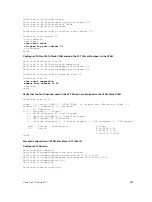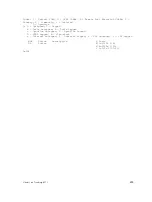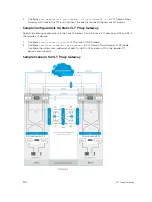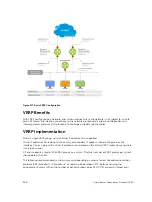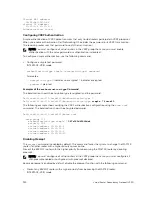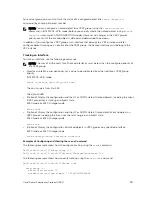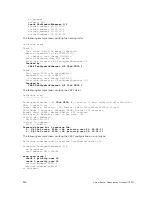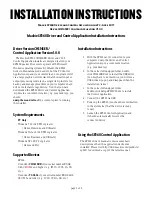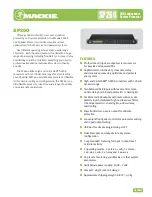
55
Virtual Router Redundancy Protocol
(VRRP)
Virtual router redundancy protocol (VRRP) is supported on Dell Networking OS.
VRRP Overview
VRRP is designed to eliminate a single point of failure in a statically routed network.
VRRP specifies a MASTER router that owns the next hop IP and MAC address for end stations on a local
area network (LAN). The MASTER router is chosen from the virtual routers by an election process and
forwards packets sent to the next hop IP address. If the MASTER router fails, VRRP begins the election
process to choose a new MASTER router and that new MASTER continues routing traffic.
VRRP uses the virtual router identifier (VRID) to identify each virtual router configured. The IP address of
the MASTER router is used as the next hop address for all end stations on the LAN. The other routers the
IP addresses represent are BACKUP routers.
VRRP packets are transmitted with the virtual router MAC address as the source MAC address. The MAC
address is in the following format: 00-00-5E-00-01-{VRID}. The first three octets are unchangeable. The
next two octets (00-01) indicate the address block assigned to the VRRP protocol, and are unchangeable.
The final octet changes depending on the VRRP virtual router identifier and allows for up to 255 VRRP
routers on a network.
The following example shows a typical network configuration using VRRP. Instead of configuring the
hosts on the network 10.10.10.0 with the IP address of either Router A or Router B as their default router;
their default router is the IP address configured on the virtual router. When any host on the LAN segment
wants to access the Internet, it sends packets to the IP address of the virtual router.
In the following example, Router A is configured as the MASTER router. It is configured with the IP
address of the virtual router and sends any packets addressed to the virtual router through interface
TenGigabitEthernet 1/1 to the Internet. As the BACKUP router, Router B is also configured with the IP
address of the virtual router. If, for any reason, Router A becomes unavailable, VRRP elects a new MASTER
Router. Router B assumes the duties of Router A and becomes the MASTER router. At that time, Router B
responds to the packets sent to the virtual IP address.
All workstations continue to use the IP address of the virtual router to address packets destined to the
Internet. Router B receives and forwards them on interface TenGigabitEthernet 10/1. Until Router A
resumes operation, VRRP allows Router B to provide uninterrupted service to the users on the LAN
segment accessing the Internet.
For more detailed information about VRRP, refer to
RFC 2338, Virtual Router Redundancy Protocol
.
Virtual Router Redundancy Protocol (VRRP)
907
Summary of Contents for Z9000
Page 1: ...Dell Configuration Guide for the Z9000 System 9 7 0 0 ...
Page 80: ...grub reboot 80 Management ...
Page 128: ... 0 Te 1 1 Te 1 2 rx Flow N A N A 128 Access Control Lists ACLs ...
Page 491: ...Figure 70 Configuring OSPF and BGP for MSDP Multicast Source Discovery Protocol MSDP 491 ...
Page 496: ...Figure 73 MSDP Default Peer Scenario 1 496 Multicast Source Discovery Protocol MSDP ...
Page 497: ...Figure 74 MSDP Default Peer Scenario 2 Multicast Source Discovery Protocol MSDP 497 ...
Page 498: ...Figure 75 MSDP Default Peer Scenario 3 498 Multicast Source Discovery Protocol MSDP ...
Page 760: ...Figure 100 Single and Double Tag TPID Match 760 Service Provider Bridging ...
Page 761: ...Figure 101 Single and Double Tag First byte TPID Match Service Provider Bridging 761 ...





